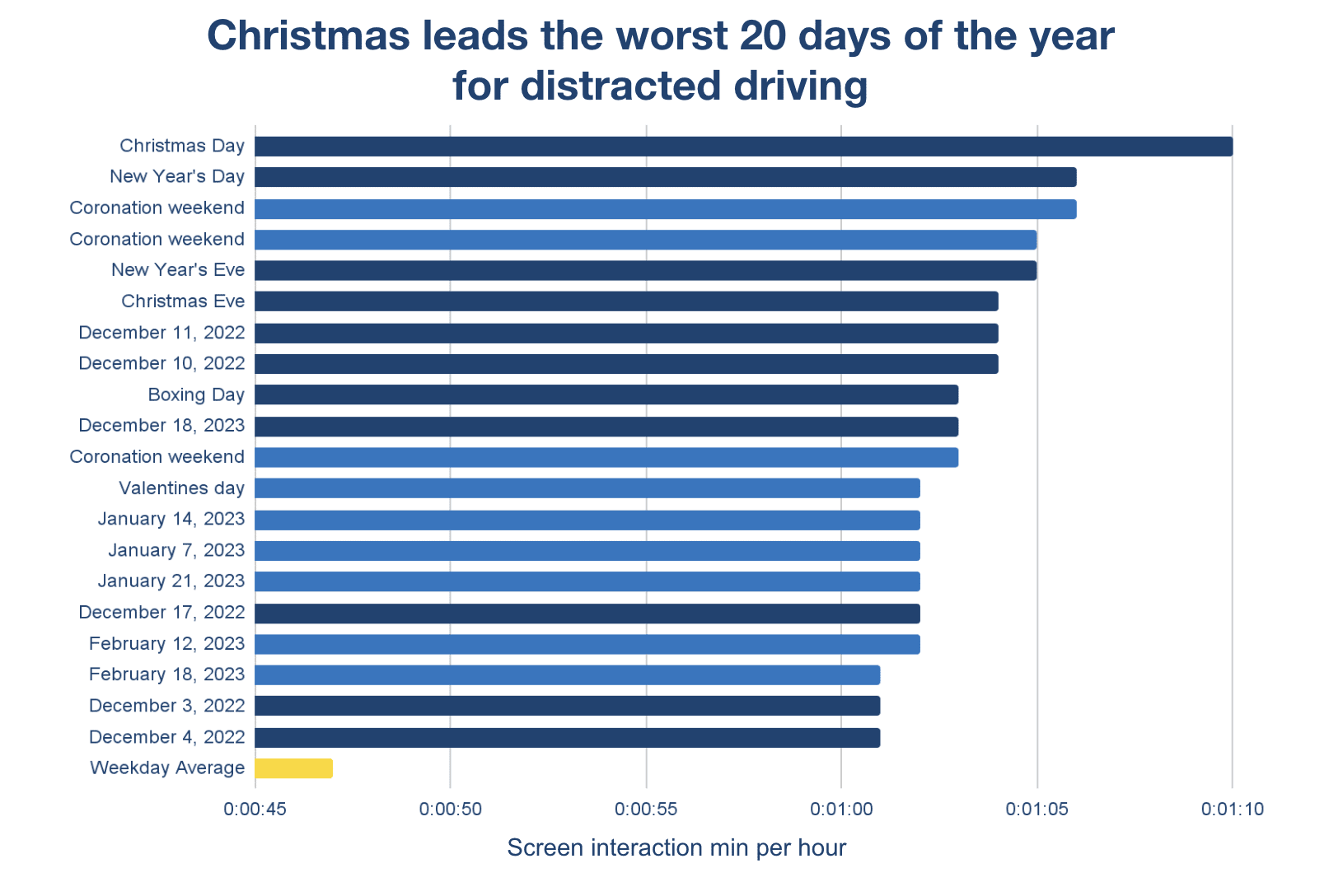Holiday Hazard: Soaring Distracted Driving and Speeding During UK Christmas Season
New CMT data reveals Christmas Day distracted driving spikes by 47%, speeding 147% higher than average

Key holiday findings:
The most distracted day of the year: On Christmas Day, phone usage while driving jumps to 70 seconds, up 47% from the annual average. This makes Christmas the most dangerous day for distracted driving.
Before Christmas: Leading up to Christmas, distracted driving behaviour spikes, with a 27% increase in phone usage compared to the rest of the year.
After Christmas: Post-Christmas, distracted driving remains high, averaging 58 seconds, significantly above the yearly average.
Bank holidays: New Year’s Day and Coronation Weekend 2023 are the second and third most distracted days in the last year, illustrating the worrying trend that bank holidays in the UK are the worst for road safety.
A worrying reversal: 2021 saw 51 seconds of distraction per hour, 2022 improved to 41 seconds, but 2023 regressed to 44 seconds.
Speeding rises, too: Christmas season speeding nearly triples the annual average, with the two weeks around Christmas seeing a marked increase in speeding incidents.

In 2022, Admiral highlighted the risks associated with winter driving in the UK, identifying December 5th as notably dangerous. This year, Cambridge Mobile Telematics (CMT) has provided new data reinforcing these concerns, indicating a rise in distracted driving and speeding during the Christmas season.
CMT’s analysis over the past year reveals a significant increase in these behaviours, particularly on Christmas Day. Average screen interaction while driving, typically 47 seconds, jumps to 1 minute and 10 seconds on Christmas, a 47% rise. This pattern is also evident on New Year’s Day and the Coronation weekend of 2023, marking them as high-risk periods.
The two-week period leading to Christmas is particularly telling. In 2022, the average screen interaction time rose from 55 seconds to 1 minute and 10 seconds on Christmas Day — a 27% surge. Unfortunately, the post-Christmas period doesn’t see a return to normalcy. Instead, distracted driving averages 58 seconds, remaining significantly higher than the annual average.
A three-year analysis shows a fluctuating pattern in distracted driving. In 2021, drivers spent an average of 51 seconds per driving hour engaging with their phones. We saw a reduction in distracted driving in 2022 with the average distraction time decreasing to 41 seconds. The trend reversed course and increased in 2023 with drivers spending 44 seconds driving distracted.
Distracted driving isn’t the sole concern. Speeding during the Christmas season is a severe issue, intensifying to 2X the usual rate. While the yearly average stands at 15 seconds of speeding per hour, the festive season sees this number climb by 18 seconds, peaking at 37 seconds on Christmas Day. This trend continues during the next two weeks, with an average of 20 seconds of speeding per hour.
This data serves as a stark reminder of the risks on the road during the festive season, urging drivers to exercise increased caution and responsibility.